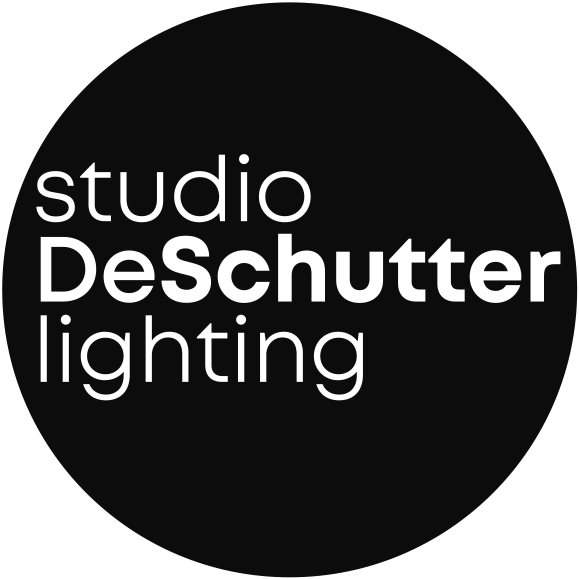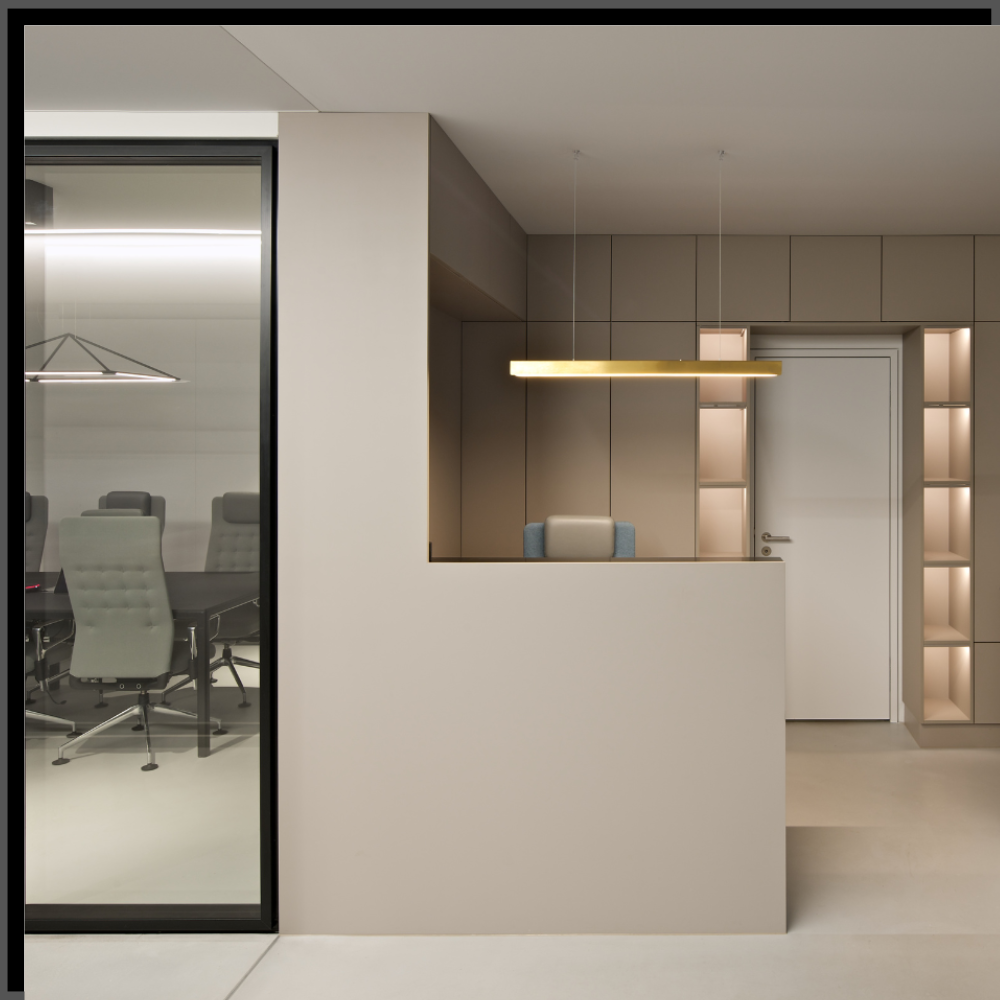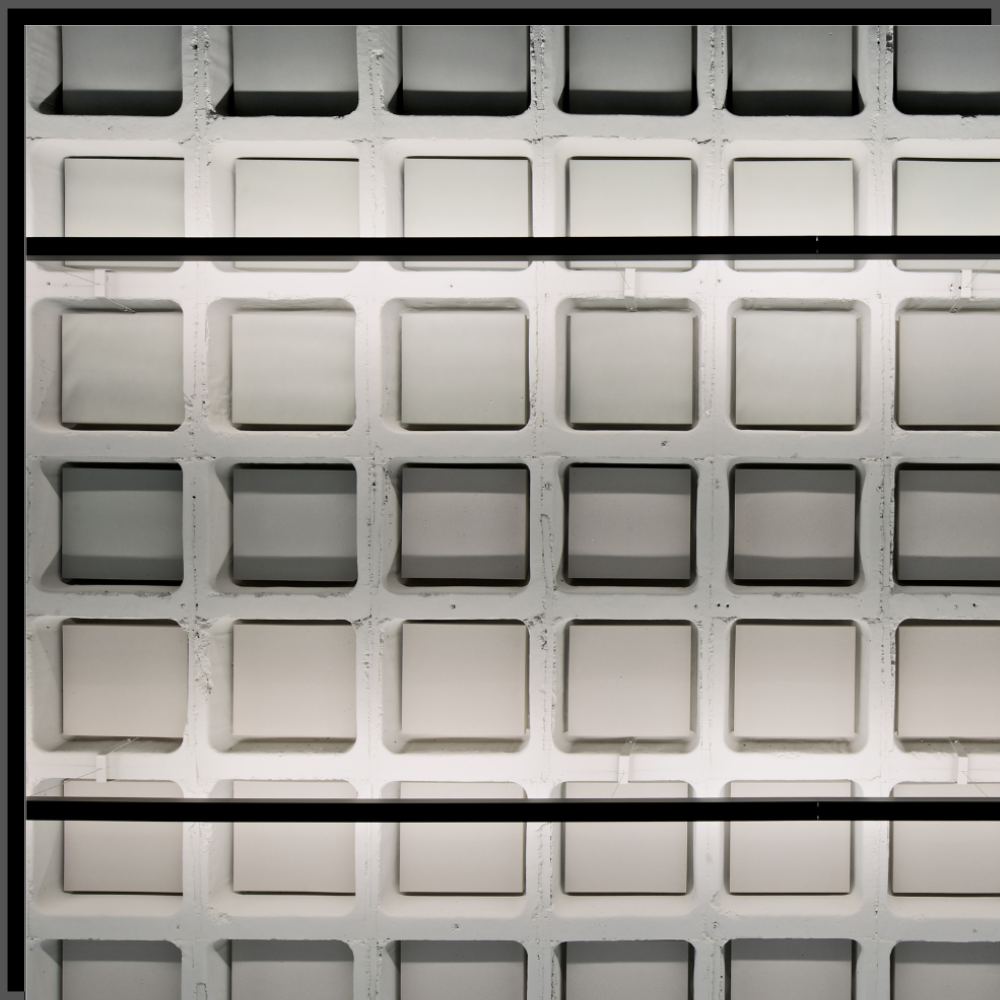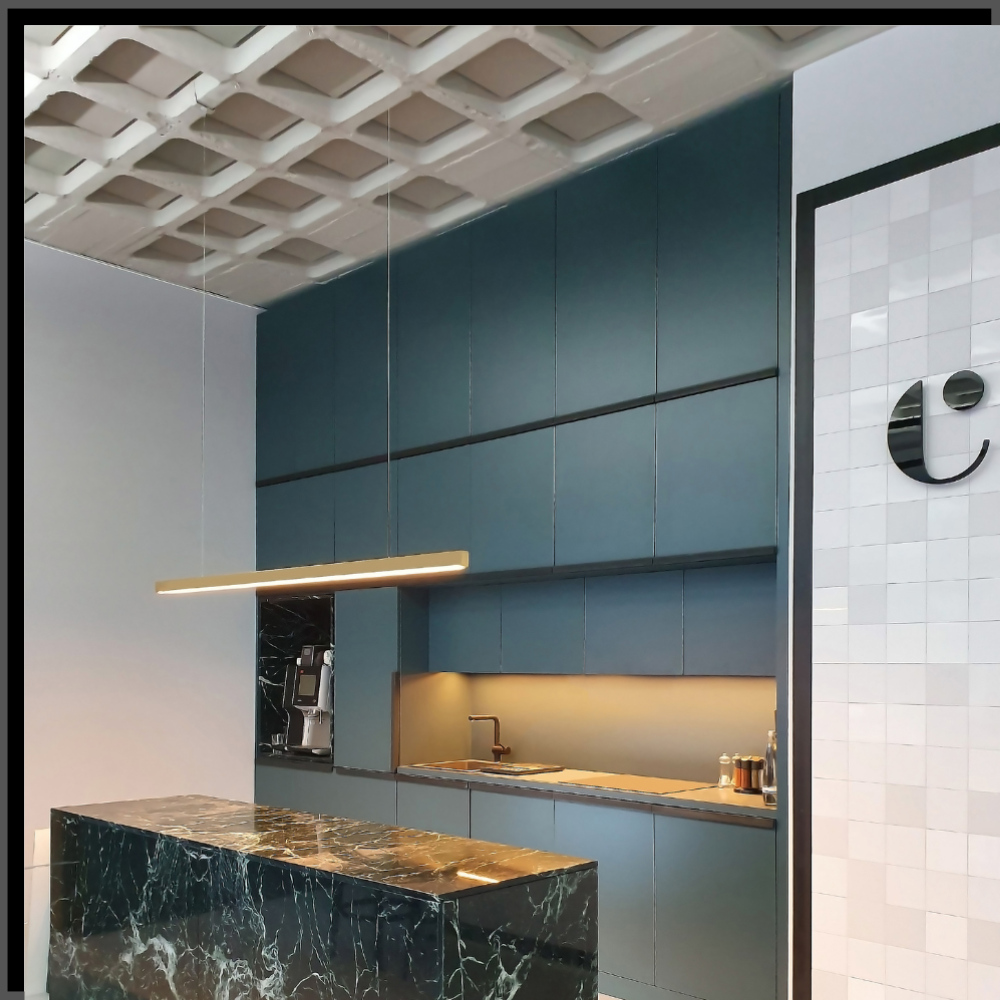Light at Workplace: Balancing Productivity and Wellbeing
As lighting designers based in Berlin and Antwerp, we create concepts that go far beyond compliance. Our mission is to design workplaces that enhance productivity, support health, and express a company’s identity.
💡 Lighting influences far more than visibility. It shapes perception, regulates the circadian rhythm, and contributes significantly to wellbeing. While regulations define minimum requirements, in practice, thoughtful lighting design can boost motivation, creativity, and health.
“Light doesn’t just define space, it defines behavior. When we design light, we design how people think, move, and connect.”
– Sabine De Schutter
Natural Light as a Source of Energy 🌞
Daylight is the most powerful resource in any workspace. Research shows that employees exposed to natural light experience less fatigue and stress. Large windows, reflective surfaces, and skylights do more than brighten a room, they connect us to time, weather, and the natural rhythm of the day.
Using Artificial Light Effectively ✨
When daylight is not enough, artificial lighting takes over. The key difference lies between calculation and design.
A lighting calculation proves how many lux are achieved where.
Lighting design considers space, materials, and emotion.
Common mistakes such as overly bright, cold, or direct light often create discomfort. Lighting interacts with color, surface, and architecture and must never be planned in isolation.
Project Example: Covivio Office Berlin 🏢
Type: Workspace Lighting
Realized: 2019
Size: 760 m²
Client: Covivio
Architecture & Coordination: MTTR Architekten + Stadtplaner
Interior & Design: Antonius Schimmelbusch GmbH
The German headquarters of Covivio was redesigned in collaboration with MTTR and Antonius Schimmelbusch. The goal was to create a flexible environment that adapts to daylight, use, and team dynamics.
The space’s concrete cassette ceiling posed structural and acoustic limitations. Studio De Schutter developed six-meter-long custom lighting profiles, mounted with bespoke metal brackets that seamlessly integrate into the beams. The indirect, dynamic light can vary from 2500K to 5000K, allowing the space to shift from focused work to soft and dimmed event lighting.
Areas without daylight were structured through frameless recessed light lines, framing the functional core and guiding the eye toward the reception. In meeting rooms, decorative pendants and dynamic white lighting provide balanced illumination, ideal for video conferencing.
Atmosphere and Identity 🌐
Lighting is more than a technical necessity, it’s a cultural statement.
In the Covivio Office, light defines identity, clear lines, warm accents, and adaptive layers create an environment that feels both professional and personal.
Outlook: From Workplace to Experience Space 🌟
Workplace lighting of the future goes beyond efficiency, it creates atmosphere, emotion, and connection.
Lighting is evolving into a strategic tool that
shapes perception and rhythm,
strengthens identity and cohesion,
and bridges the physical and digital workspace.
Sustainability adds another dimension. Circular materials, modular fixtures, and smart controls ensure flexibility and longevity.
Light is not an accessory, but a silent designer that defines how we work, communicate, and feel in the workplaces of tomorrow.
👉 Get lighting insights straight to your inbox – subscribe now!
Articles, trends, and project insights delivered regularly
Expertise directly from lighting designers
👉 Consultancy for architects and companies – book your appointment today!
Tailored lighting concepts for modern workplaces
Guidance from analysis to realization
Pictures: An example for light at the workplace (this is the covivio office designed by Studio de Schutter).




